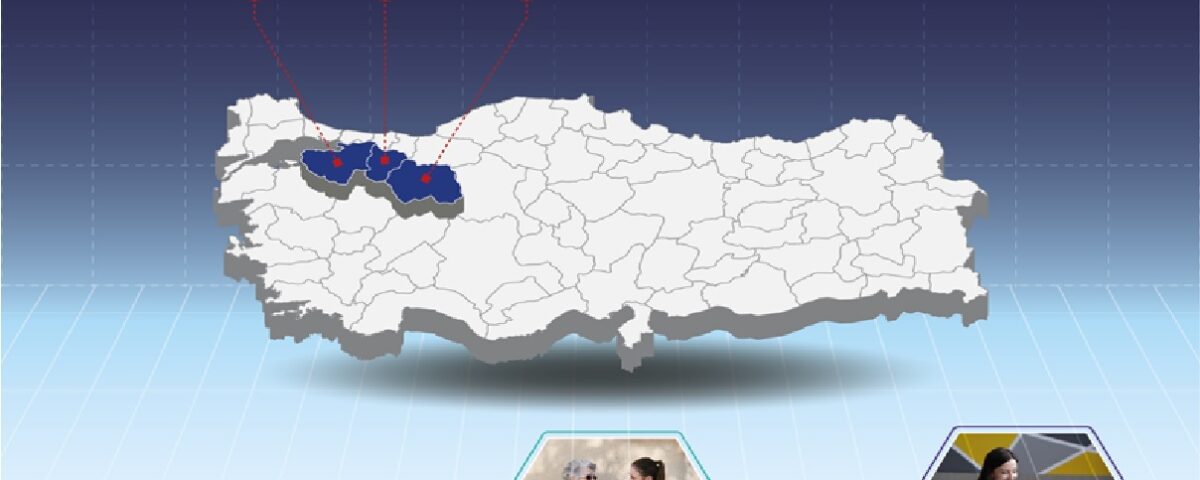The 2024–2028 TR41 Regional Plan, prepared by the Bursa Eskişehir Bilecik Development Agency (BEBKA) under the coordination of the Ministry of Industry and Technology’s General Directorate of Development Agencies, was approved by Presidential Decree No. 9253 dated December 16, 2024, and published in the Official Gazette on December 17, 2024.
Alongside the TR41 Regional Plan, the Regional Development Alignment Strategy and the Plans of 25 Level-2 Regions were also approved. These documents aim to identify the socioeconomic characteristics, potentials, and needs of regions and to facilitate the development of spatially differentiated policies.
Covering the provinces of Bursa, Eskişehir, and Bilecik, the 2024–2028 TR41 Regional Plan serves as a key policy document, outlining strategic priorities, targets, measures, and program/project proposals developed in line with a shared vision identified through stakeholder engagement coordinated by BEBKA.
As a comprehensive roadmap to support the region’s economic, social, and environmental development, the vision for the 2024–2028 TR41 Regional Plan is defined as:
“A TR41 Region that generates added value in both urban and rural areas with qualified human capital and sectoral diversity; has advanced transportation infrastructure; is resilient to disasters and crises; is livable, green, and a proactive center of innovation and entrepreneurship in the digital transformation.”
In line with this vision, the plan identifies three strategic priorities:
-
Ensuring Proactive Green and Digital Transformation & Strengthening the Entrepreneurship Ecosystem
-
Improving Infrastructure and Transport Connectivity & Promoting Balanced Spatial Development and Economic Growth
-
Fostering Human Development and Inclusive Access to Social Services
Under the first strategic priority, the plan targets increasing the technological capacity and added value of the manufacturing industry, supporting green and digital transformation, promoting resource efficiency practices, improving air and water quality, enhancing climate change mitigation capacity, strengthening R&D infrastructure, improving the entrepreneurship ecosystem and investment climate, and fostering collaboration between industry and academia.
The second strategic priority aims to reduce intra-regional development disparities. Actions include enhancing urban resilience and livability, ensuring adequate public amenities, promoting efficient and effective use of industrial zones, expanding intra- and inter-city rail and road networks, increasing public transportation use, improving rural quality of life, boosting agricultural production, and fostering rural tourism.
The third strategic priority focuses on strengthening human capital and inclusive public services. Key objectives include promoting participatory governance, expanding social services, improving living conditions for individuals with special needs, reinforcing efforts to combat addiction, and increasing youth and women’s employment.
During the preparation of the Regional Plan, situational analyses were conducted on economic indicators, competitiveness and investment environment, population and human capital, education, labor market, quality of life, accessibility and infrastructure, agriculture, forestry and rural development, natural and cultural assets, and environmental and climate change issues. The principles of participation and transparency were prioritized throughout the process. The plan was shaped through feedback gathered from public institutions, private sector representatives, civil society organizations, and universities; outputs of workshops held in all three provinces; district-level visits; and the results of an online regional survey.
The 2024–2028 TR41 Regional Plan includes strategic priorities, targets, measures, and project/program examples that promote sustainable regional growth by addressing local dynamics and needs. It was developed in close cooperation with all relevant stakeholders.
In addition to priorities, targets, and project proposals, the Plan includes a spatial development scheme, the alignment of Plan targets with the United Nations Sustainable Development Goals (SDGs), and performance indicators.










